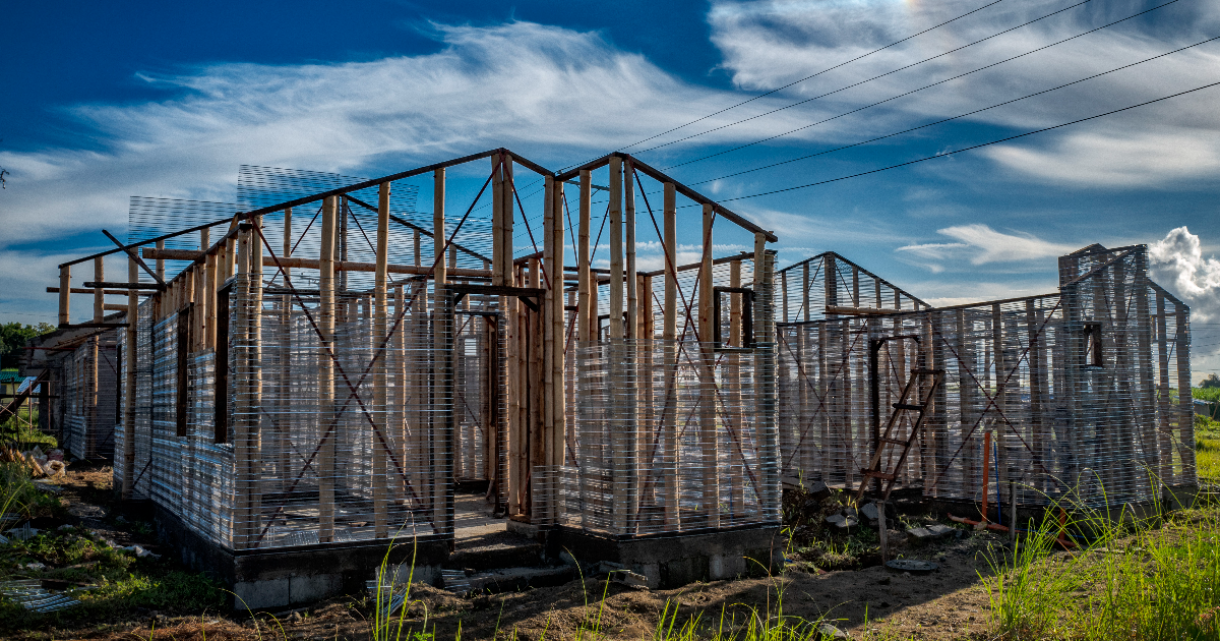Discovering the Life Cycle Assessment of Bamboo Structures
Bamboo is a construction material that is both durable and lightweight. It has gained significant attention due to its potential for sustainable construction. With the increasing challenges of climate change and environmental degradation, the need for renewable bio-based building materials has never been more critical. However, harnessing the full potential of Cement-Bamboo Frame Technology in structural design and assessing its environmental impact remains a challenge. This is where Life Cycle Assessment (LCA) steps in. LCA is a powerful tool for comprehensively evaluating the ecological footprint of bamboo structures.
In this blog, we will delve into the concept of LCA and its application to bamboo-based construction, shedding light on the remarkable environmental benefits and hurdles associated with this dynamic material.
Understanding LCA and Parametric LCA
Life Cycle Assessment (LCA) is an approach used to evaluate the environmental impacts of buildings and structures over their entire lifespan. The LCA methodology is composed of four distinct phases: production and transportation, construction, operational phase, and disposal phase. This process is summarized into four basic steps: defining goals and scope, creating a life cycle inventory, conducting a life cycle impact assessment, and interpreting the results. LCA is an excellent tool for evaluating the environmental impact of processes and structures, and it can provide valuable insights for decision-making.
LCA methodology employs a data-driven approach, which may pose challenges during early design stages. Yet, during these initial phases, this is where the most significant potential for optimizing and reducing greenhouse gas emissions lies. To address this, a simplified approach known as parametric LCA was developed. This method is accessible to a broader audience, including NGOs and humanitarian organizations engaged in sustainable housing projects.
Bamboo as a Construction Material
Before we explore LCA’s role in evaluating bamboo structures, let’s understand why bamboo is hailed as an eco-friendly alternative to conventional building materials. Bamboo is a type of grass that grows at an astonishing rate, reaching maturity within a few years. This rapid growth allows frequent harvesting without depleting the resource, making bamboo a sustainable choice. Moreover, bamboo possesses natural attributes that contribute to its strength, durability, and flexibility, making it suitable for many construction applications. Its impressive strength-to-weight ratio further solidifies its standing as an ideal structural material.
Throughout history, bamboo has been employed as a construction material across various cultures and geographies. From bamboo houses and bridges to furniture and decorative elements, this versatile resource inspires architects and builders worldwide, driven by its sustainability and minimal carbon footprint.
Case Study: Cement-Bamboo Frame Housing Vs. Concrete Construction Systems
To illustrate the practical application of LCA, a recent study compares the Cement-Bamboo Frame Technology employed by BASE with traditional concrete-brick construction systems.
The study conducted using parametric LCA revealed that as the building perimeter increased, emissions rose as well. However, the increase was more abundant in concrete structures due to higher reinforcement requirements, resulting in a more significant increase in overall carbon footprint.
Interestingly, the study noted that the quality of steel has a substantial impact on emissions for concrete structures. Steel and cement go hand in hand with each other when found in typical reinforced concrete buildings; whereas, for bamboo, the usage of steel is very minimal and can only be found at the foundations and connections in the bamboo; it presents only a fraction to that of a typical structure.
Furthermore, the study shows that the Cement-Bamboo Frame Technology could achieve remarkable environmental savings, potentially reducing emissions by up to 60% compared to conventional construction systems.
Challenges and Future Prospects
While LCA proves to be a formidable tool, it isn’t without its challenges, mainly when applied to innovative materials like cement-bamboo composites. Challenges include obtaining precise data, addressing regional variations, and navigating complex LCA software. However, with the advancement of technology and a growing emphasis on sustainable construction, these obstacles are gradually being surmounted.
In the future, innovation and technology will play roles in optimizing bamboo, including cement-bamboo composites, as a building material. Researchers and builders are actively exploring new treatments, designs, and applications to make these materials even more sustainable and durable.
The Life Cycle Assessment of cement-bamboo frame structures and innovative materials such as cement-bamboo composites provide invaluable insights into the environmental impact of construction practices. Bamboo, with its sustainability, combined with LCA’s systematic approach, offers a promising avenue for eco-conscious construction. As we fight climate change, bamboo structures may emerge as key players in building more sustainable structures. For further insights into cement bamboo frame technology, explore our website at www.base-builds.com.
Base Bahay Foundation, Inc (BASE) is the pioneer of the Cement-Bamboo Framework in the Philippines. BASE builds affordable and disaster-resilient structures using bamboo-based technology. Through continuous research in the Base Innovation Center (BIC), BASE is optimizing the technology and looking for new applications outside its standard model. BASE also offers training courses under its Bamboo Academy program to share alternative building technologies, provide further knowledge about bamboo, and engage other institutions in sustainable construction.





